#james tavernier
Text










2023/24 SCOTTISH PREMIERSHIP
MATCH DAY 31
Rangers 3-3 Celtic
7th April 2024
Ibrox Stadium
Tavernier (55' pen), Sima (86'), Matondo (90+3')
Maeda (1'), O'Riley (34' pen), Idah (87')
#rangers fc#rangers#glasgow rangers#rangers football club#rangersfc-1872#rangersfc#ClementEra#2023/24#2023/24 season#old firm#old firm derby#scottish premiership#spfl#rangers v celtic#glasgow rangers v glasgow celtic#james tavernier#abdallah sima#rabbi matondo#john souttar#connor goldson#philippe clement#clement era#cyriel dessers#ibrox#rivalry#rivals#derby#glasgow
7 notes
·
View notes
Text


James Tavernier - Rangers FC v. Celtic FC - Scottish Premiership
#james tavernier#rangers#rangers fc#scottish premiership#football#soccer#footballers#footballer#old firm
3 notes
·
View notes
Photo

5 notes
·
View notes
Text

>>>
0 notes
Text

Fittest team in the spfl
#glasgow rangers#rangers#rangers fc#ryan jack#Alex Lowry#rabbi matondo#Allan mcgregor#james tavernier#Ryan Kent#connor goldson#scott arfield#kemar roofe#ianis hagi#malik tillman
0 notes
Text
'I loved watching Dani Alves' - How Rangers captain Tavernier became Europe's deadliest defender
‘I loved watching Dani Alves’ – How Rangers captain Tavernier became Europe’s deadliest defender
Rangers’ unlikely run to the Europa League final is best epitomized by the story of their captain James Tavernier, a player who, on the face of things, has little right to be competing in such an event.
Written off by Newcastle after years spent in the limbo of the loan market at clubs such as Gateshead, Carlisle United, Sheffield Wednesday, MK Dons and Rotherham, he subsequently failed to make…

View On WordPress
#Eintracht Frankfurt v Rangers#Feature Stories#James Tavernier#Premiership#Rangers#UEFA Europa League
0 notes
Photo

#bertrand tavernier#2009#2000s#usa#france#james lee burke#image entertainment#southern gothic#thriller#serial killers#supernatural#ghosts#detective#new orleans
0 notes
Text
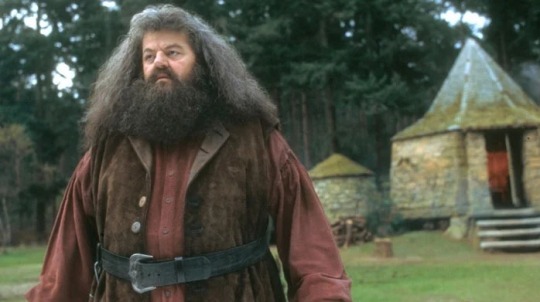



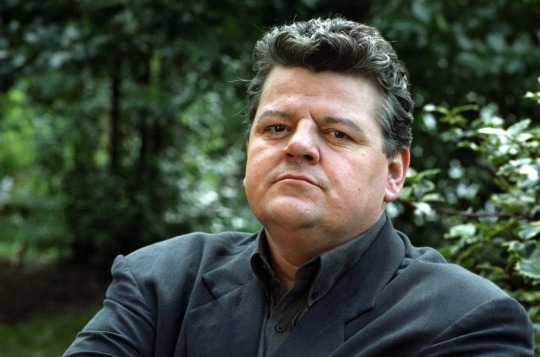
RIP Robbie Coltrane (1950-2022) - Beloved character actor best remembered for his performance as the giant Rubeus Hagrid in the Harry Potter franchise (2001-2011) and the lead character Dr. Edward 'Fitz' Fitzgerald in the series Cracker (1993-2006) - for which he won 3 consecutive TV Bafta awards has passed away. Another memorable character he played was Valentin Zukovsky, a former KGB agent-turned-mob-boss in two films from the James Bond franchise, GoldenEye (1995) and The World is Not Enough (1999). Other credits include films directed by great director such as Neil Jordan, Bertrand Tavernier, Derek Jarman, the Hughes Brothers, and Steven Soderbergh in a variety of roles in Deathwatch (1980), Flash Gordon (1980), Caravaggio (1986), Mona Lisa (1986), Henry V (1989), The Pope Must Die (1991), Buddy (1997), From Hell (2001), Ocean's Twelve (2004), Van Helsing (2004), and mostly the miniseries National Treasure (2016).
2K notes
·
View notes
Text

James Ensor
Poster for the Salon des Cent (Self-Portrait with Devils) (Delteil 131; Tavernier 141), 1898
Lithographic poster in colors on tan wove paper laid down to beige paper support, printed for the artist's 1898 exhibition at the Salon des Cent, Paris, framed.
sheet 19 3/8 x 14 1/8in (48.6 x 36.1cm)
174 notes
·
View notes
Text
HUMAN LIFE
1710 Galeb was born 25th August named Şehzade Süleyman, to parents Ahmed III Sultan of the Ottoman Empire and consort Mihrişah Kadın. ( a.k.a Jeannette de Bazory )
1730 Ahmed III reign as Sultan of the Ottoman Empire ended after an insurrection initially involving 17 Janissaries, citizens and military, led by Patrona Halil on 20th September.
Fearing for her eldest son’s life, Jeannette de Bazory ( Galeb’s mother ) persuaded Galeb to hide on a ship leaving Constantinople and fake his death. He reluctantly agreed.
Her fears were proven correct and she was murdered by the Janissaries soon after.
The captain of the ship Galeb escaped on, Ohrili Fahri, decided he was a good worker and adopted him into his family.
He soon joined his adoptive family in business as a diamond merchant.
After receiving news that his mother had died, Süleyman abandoned his name, dawning the name of ’ Galeb Bazory ’ in honour of his mother and adopted a detached persona.
1733 Galeb would begin sailing the world in search of other business opportunities.
1740 Galeb met Jean Baptiste Tavernier in Cadiz, Spain.
1743 After the two became close, Galeb would open up to Jean Baptiste Tavernier who would cement his interest in turning him and later embrace Galeb.
UNLIFE
1745 With his sire wanting him to retake his throne or control it from the shadows, Galeb refuses and abandons his family and sire but continues to sporadically keep in contact with him.
1794 After travelling the world and continuing his business ventures, Galeb travelled to Andorra where he met and fell in love with Agueda Hernández.
1796 He’d admit to Agueda that he was a vampire.
1805 Agueda admits her dream of having a child and growing old with Galeb, realising he can’t give her what she wants and what he believes she deserves, he flees the country.
1806 Galeb meets a man named James Underwood, a sugar trader, who he begins to have feelings for.
1807 James and his wife have a son who they named Berel, James’ wife dies shortly after the birth.
1814 In contact with his sire, Jean Baptiste Tavernier, Galeb agrees to settle in New York.
1829 James Underwood dies, Galeb takes on Berel as his son.
1833 Berel asks Galeb to go into business with him.
1835 Berel questions why Galeb never ages, Galeb admits he’s a vampire and Berel begs him to turn him.
1869 After many years of putting it off, Galeb reluctantly embraces Berel.
1879 Disgusted by Berel’s behaviour as an immortal, Galeb abandons his childe.
8 notes
·
View notes
Text









2023/24 UEFA EUROPA LEAGUE
ROUND OF 16 - 2ND LEG
Rangers 0-1 SL Benfica (2-3 agg)
14th March 2024
Ibrox Stadium
Silva (66')
#rangers fc#rangers#glasgow rangers#rangers football club#rangersfc-1872#rangersfc#2023/24#2023/24 season#SL benfica#clementera#clement era#uefa europa league#europa league#round of 16#europa league round of 16#ibrox#james tavernier#jack butland#benfica#fabio silva#nicolas raskin#john lundstram#mohamed diomande#john souttar#ridvan yilmaz#scott wright#tom lawrence#connor goldson#cyrel dessers
7 notes
·
View notes
Text

Jane Birkin, actor and singer, dies aged 76
Best known for the sexually explicit 1969 hit Je t’aime … moi non plus, she found fame in her adopted France
The British-born actor and singer Jane Birkin has been found dead at her home in Paris, the French culture ministry said on Sunday.
Birken, 76, was best known overseas for her 1969 hit in which she and her lover, the late French singer-songwriter Serge Gainsbourg, sang the sexually explicit Je t’aime … moi non plus.
Birkin found fame in her adopted France, catapulted into the public eye by her turbulent relationship with Gainsbourg. Her heavily accented French became her personal style signifier.
She crossed the channel in 1968 at the age of 22 to star in a film alongside Gainsbourg, who was 18 years her senior. It was the start of a 13-year relationship that made them France’s most famous couple, in the spotlight as much for their bohemian and hedonistic lifestyle as for their work.
The doe-eyed Birkin, with her soft voice and androgynous silhouette, quickly became a sex symbol, recording the steamy Je t’aime … moi non plus with a growling Gainsbourg. Banned on radio in several countries and condemned by the Vatican, the song was a worldwide success.
“He and I became the most famous of couples in that strange way because of Je t’aime and because we stuck together for 13 years and he went on being my friend until the day he died. Who could ask for more?” Birkin told CNN in 2006.
“So Paris became my home. I’ve been adopted here. They like my accent,” she said.
Birkin was born in London on 14 December 1946 to an actor mother and naval officer father. At 17, she married the James Bond composer John Barry, with whom she had a daughter, Kate, but the marriage lasted only three years.
She made waves in her film debut in 1966 with a full frontal nude scene in the swinging sixties classic Blow-Up by Michelangelo Antonioni.
After meeting Gainsbourg, 18 years her senior, in Paris on the set of a romantic comedy – he was her co-star – she moved to France permanently. Their musical and romantic relationship was tempestuous. During one of their raging rows, Birkin launched herself into the River Seine after throwing a custard pie in Gainsbourg’s face.
They had a daughter, Charlotte, who became a hugely successful actor and singer.
Birkin finally walked out on France’s favourite bad boy in 1980 and went on to to blaze her own trail. In cinema, she branched out from more ditsy roles to arthouse productions, gaining three nominations at the Césars – France’s Oscars – starting with La Pirate in 1985.
In her about 70 films she has been directed by France’s leading directors, including Bertrand Tavernier, Jean-Luc Godard, Alain Resnais, James Ivory and Agnès Varda.
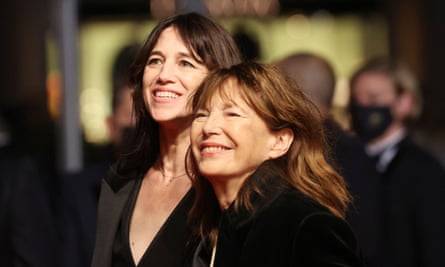
A chronic alcoholic, Gainsbourg died of a heart attack in 1991 aged 62. A few years earlier, he was in the audience to hear Birkin perform her first solo concert at the age of 40 at the Bataclan theatre in Paris.
In 1998 came her first record without Gainsbourg, Á la Légère. But she repeatedly returned to his repertoire, singing his hits around the world accompanied by a full orchestra, including in 2020 in New York where she performed with Iggy Pop.
The English rose of French chanson became something of a national treasure, who preserved the accent that made the French swoon throughout her life and an endearing air of fragility.
Her life was marked by tragedy, with her eldest daughter Kate Barry, a photographer, apparently committing suicide in 2013. She had leukaemia in the late 1990s and in 2021 suffered a minor stroke.
With her flared jeans, mini-dresses and messy bangs, Birkin was the ultimate It girl in the 1970s. In 1984, Hermès named one of its handbags after her. She was made an Officer of the Order of the British Empire (OBE) in 2001 for her services to acting and British-French cultural relations.
Besides Charlotte and Kate, she had another daughter, the singer Lou Doillon, from her 13-year relationship with the French director Jacques Doillon.
RIP Jane
23 notes
·
View notes
Photo

1 note
·
View note
Text

>>>
0 notes
Text
2023 in 12 movies (1 per months)
January
The Horse Whisperer (1998) directed by Robert Redford with Robert Redford, Kristin Scott Thomas, Scarlett Johansson, Sam Neil, Chris Cooper and Cherry Jones
[First Time]
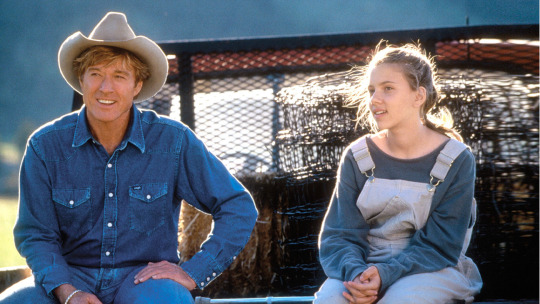
February
L'Horloger de Saint-Paul (1974) directed by Bertrand Tavernier with Philippe Noiret, Jean Rochefort, Jacques Denis, Yves Afonso, Julien Bertheau and Jacques Hilling
[First Time]

March
The Fabelmans (2022) directed by Steven Spielberg with Gabriel LaBelle, Michelle Williams, Paul Dano, Seth Rogen, Keeley Karsten, Julia Butters and Judd Hirsch
[First Time]
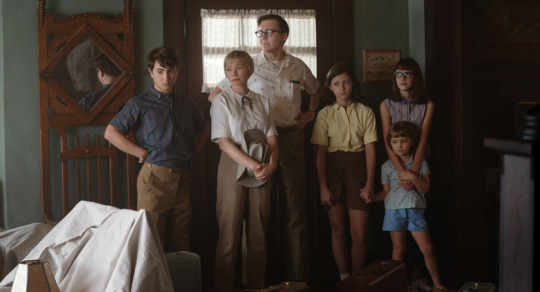
April
The Third Man (1949) directed by Carol Reed with Joseph Cotten, Alida Valli, Orson Welles, Trevor Howard and Bernard Lee
[First Time]

May
The World, The Flesh and the Devil (1959) directed by Ranald MacDougall with Harry Belafonte, Inger Stevens and Mel Ferrer
[First Time]

June
La ciociara (1960) directed by Vittorio De Sica with Sophia Loren, Eleonora Brown, Jean-Paul Belmondo, Carlo Ninchi, Andrea Checchi and Pupella Maggio
[First Time]
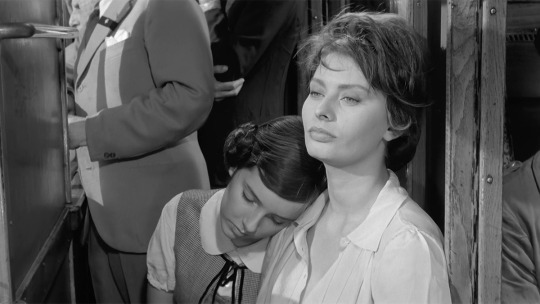
July
Oppenheimer (2023) directed by Christopher Nolan with Cillian Murphy, Robert Downey Jr., Emily Blunt, Matt Damon, Florence Pugh, Josh Hartnett and Casey Affleck
[First Time]
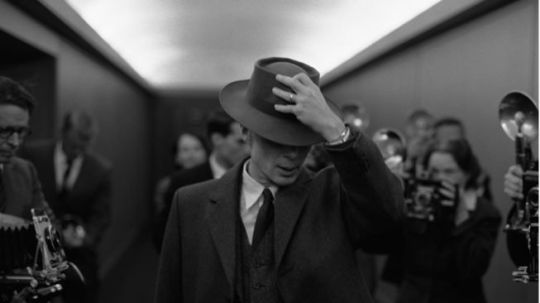
August
Heat (1995) directed by Michael Mann with Al Pacino, Robert De Niro, Val Kilmer, Tom Sizemore, Diane Venora, Amy Brenneman, Dennis Haysbert, Donald Breedan and Ashley Judd
[First Time]

September
Catch Me If You Can (2002) directed by Steven Spielberg with Leonardo DiCaprio, Tom Hanks, Christopher Walken, Nathalie Baye, Amy Adams, Martin Sheen, James Brolin and Brian Howe
[First Time]

October
Le Grand Bain (2018) directed by Gilles Lellouche with Mathieu Amalric, Guillaume Canet, Benoît Poelvoorde, Jean-Hugues Anglade, Philippe Katerine, Félix Moati, Alban Ivanov, Balasingham Thamilchelvan, Virginie Efira et Leïla Bekhti
[First Time]

November
Fools Rush In (1997) directed by Andy Tennant with Matthew Perry, Salma Hayek, Jon Tenney, Carlos Gómez, Tomás Milián, Siobhan Fallon et John Bennett Perry
[First Time]
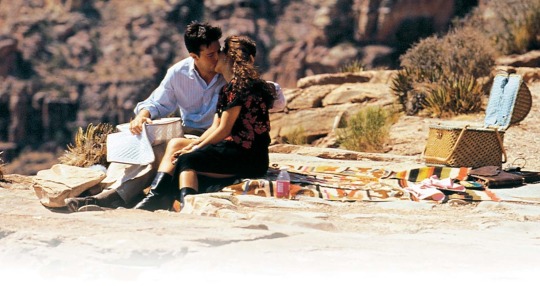
December
The Great Race (1965) directed by Blake Edwards with Tony Curtis, Natalie Wood, Jack Lemmon, Peter Falk, Keenan Wynn et Ross Martin
[First Time]

Honourable Mentions :
Airplane! (1980)
Duel (1972)
Les Sentiments (2003)
The Carpetbaggers (1964)
Scoop (2006)
Mon crime (2023)
To Have and Have Not (1944)
The Super Mario Bros. Movie (2023)
The Man Who Shot Liberty Valance (1962)
臥虎藏龍 (2000)
The Glenn Miller Story (1954)
Le Dernier Voyage (2020)
Dead Men Don't Wear Plaid (1982)
L'ingorgo (1979)
Indiana Jones and the Last Crusade (1989)
Adieu Gary (2008)
Conflict (1945)
Fahrenheit 451 (1966)
La Nuit américaine (1973)
Sorcerer (1977)
La Guerre des polices (1979)
Life of Pi (2012)
The Big Short (2015)
Le Hussard sur le toit (1995)
Excalibur (1981)
The Naked Gun: From the Files of Police Squad! (1988)
Bridget Jones’s Diary (2001)
Le Procès Goldman (2023)
Enter the Dragon (1973)
Matrimonio all'italiana (1964)
Chaplin (1992)
La Vie de château (1966)
Escape from Alcatraz (1979)
Au-delà des grilles (1949)
Second Tour (2023)
Le Couteau dans la plaie (1962)
The Eiger Sanction (1975)
JFK (1991)
Le Fugitif (1993)
Chef (2014)
Quai des Orfèvres (1947)
Appointment with Death (1988)
Bridget Jones: The Edge of Reason (2004)
Wallace & Gromit: The Curse of the Were-Rabbit (2005)
River of No Return (1954)
L'Assassinat du père Noël (1941)
Dances with Wolves (1990)
Die Glasbläserin (2016)
The Lion in Winter (1968)
Les Mystères de Paris (1962)
#2023 films#my top 12#cinema#cinematography#the horse whisperer#l'horloger de saint paul#the fabelmans#the third man#the world the flesh and the devil#la ciociara#oppenheimer#heat#catch me if you can#le grand bain#fools rush in#the great race#films#movies of 2023#bye 2023
4 notes
·
View notes
Text
Listed: James and the Giants

James and the Giants is the latest project from James Jackson Toth, who got his start in the freakiest edges of aughts folk as Wooden Wand, releasing a slew of albums under that and his own name. More recently, Toth has convened another band, James and the Giants, which shares personnel with Woods (Jarvis Tavernier, Kyle Forester and Jeremy Earl). In her review of their self-titled debut, Jennifer Kelly wrote, “Who’d have guessed from James Jackson Toth’s early forays into noisy, freak folk experiments that he’d shape up as such an elegant craftsman? This latest collection of songs attests to the artist formerly known as Wooden Wand’s deep connection to and understanding of foundational American popular music forms: blues, folk, gospel, R&B, Beatles-esque psych and Brill Building pop.”
Below is some music I really love. I have omitted music created by friends and people with whom I am acquainted in “real life.”
Oiro Pena
youtube
Studio overdubs are a bit of a rarity in jazz music; even less common is jazz created by a single musician overdubbing themselves. While recent Oiro Pena albums have expanded to include several other members, band founder Antti Vauhkonen’s earliest work under the name was created by Vauhkonen alone accompanying himself performing all of the instruments. The result is like a cross between the space exotica of Sun Ra’s Chicago period and the homespun psychedelic clatter of No Neck Blues Band. As much as I enjoy the band’s recent work, it is the early Oiro Pena records that I find most compelling, the composite parts of a single brain improvising with itself to create a beautiful illusion.
B-52s — “Ain’t It A Shame”
youtube
The B-52s’ 1986 album Bouncing Off The Satellites is what is often referred to in rock crit speak as a “transitional record.” It preceded a 3-year hiatus, after which the B-52s enjoyed a tremendously successful comeback with 1989’s 4x platinum Cosmic Thing, thanks in no small part to chart-topping singles “Love Shack” and “Roam.” Bouncing Off The Satellites found the increasingly fractious band moving away from their taut, artsy new wave origins and embracing the potential of nascent studio technology, namely the Fairlight CMI. Most crucially, the album was released less than a year after the AIDS-related death of founding member and guitar player Ricky Wilson, who was silently and secretly struggling with the virus during the recording of the album. As a result, the band did not promote nor tour in support of the album, which is really too bad, because it’s a great group of songs, the highlight of which being the melancholy “Ain’t It A Shame” (later covered by Sinead O’Connor). The song does not deal directly with Ricky’s illness—it was written before the diagnosis was revealed to anyone in the band—but seems to foreshadow some of the band’s personal difficulties in that prophetic way that songs often do. A gorgeous, flawless song.
Eyvind Kang — “Binah”
youtube
Tucked inconspicuously into the center of polymath / genius Eyvind Kang’s 2002 CD-only release, Live Low To The Earth, In The Iron Age, is this mesmeric masterpiece, somewhere between a post-rock Bill Frisell and a more pastoral Henry Flynt. Over 27 minutes, “Binah” slowly blossoms, changing almost imperceptibly. To an impatient listener, it will be like watching paint dry; to me it’s like watching a flower bloom. My wife Leah and I have listened to this album on a loop for hours, and I’m not typically a “listen to a song on a loop for hours” kinda guy.
Omar S
youtube
For over two decades, fiercely independent producer Omar S has been upholding the tradition of Detroit techno, his best music fusing the black sonic fantasias of Drexciya with the supple house-funk of Theo Parrish. On his own records and on his own label, FXHE, on which the vast majority of his 12”s and albums are released, the former Ford Motor Factory employee works exclusively with analog gear. Omar’s releases on FXHE are pressed in small quantities, often with crude, handwritten labels; if you order direct from FXHE, it’s very likely the box you receive will have been assembled and shipped by the man himself. While using techno and Chicago house as its base, the music Omar S produces is eclectic and unpredictable, untethered to any signature sound or approach; he’s just as likely to release an irresistible summer jam (see the Diana Ross-sampling “Day,” a track so infectious it makes Daft Punk sound like The New Blockaders) as darked-edged minimal house tracks like “Nite’s Over Compton,” on which Omar S masterfully evokes a mood using the barest essentials and tools.
Frank Zappa — “Chunga Basement”
youtube
I’ve given up trying to convert friends to the cult of Frank Zappa. I’m a big fan, especially of his guitar playing, but I sympathize with those who might have an aversion to Zappa’s prurient and mean-spirited sense of humor. In fact, if Frank Zappa’s particular sense of humor could be said to have an exact diametric opposite, it is my own. I love Zappa’s music in spite of — not because of — its scatological / puerile aspects. With that preamble in mind, I encourage all you private press-obsessed guitar loners to consider this embryonic, uncharacteristically laid-back version of future live staple “Chunga’s Revenge,” recorded during a casual jam session in early 1970 and featuring a rhythm section of Ian Underwood on keys, Max Bennett on bass, and Aynsley Dunbar on drums. “Chunga’s Revenge” was historically one of several signature vehicles for Zappa the Guitarist (as opposed to Zappa the Social Theorist, Zappa the Comedian-Provocateur, Zappa the Serious Composer, et al) and this early take finds our mustachioed man sounding uncharacteristically mellow and un-caffeinated, exploring the endless possibilities of his guitar in a way that isn’t remotely wacky or wanky.
Barre Phillips — Three Day Moon
youtube
There was a brief period in the mid-to-late 1970s when artists on ECM — my all-time favorite label after Three Lobed — were experimenting with synthesizers, approaching this relatively new technology with an omnivorous artistic fervor common to the ECM roster. Legendary bassist Barre Phillips’ pair of albums in the late 1970s are, to me, the distillation of this meeting of the earthy and the synthetic, locating in the process what might be considered ground zero for “ambient jazz.” While jazz groups incorporating elements of ambient and drone have become increasingly common as of late, there was little precedent in 1976 for the experimental marriage of saxes and circuitry. Mountainscapes (1976) and Three Day Moon (1978) both feature the mysterious and under-recorded synthesist Dieter Feichtner, about whom little is known — anyone know what became of him?
The Knife — Silent Shout
youtube
In 2006, I was in an electronic music rut. Everything being produced suddenly felt like a retread or a facsimile of things I already liked, a malady common to older, more established genres like rock and jazz, but not, as far as I was concerned, electronic music. My slump ended upon hearing Silent Shout, the third album by Swedish sibling duo The Knife. Though I avidly continue to keep up with the uniformly excellent solo projects of both members of The Knife — Karin Dreijer Andersson’s Fever Ray and Olof Dreijer’s Oni Ayhun — Silent Shout remains a pivotal record in my listening life. The album’s gothic austerity and phantasmal reimagining of dance music is clearly the work of visionary minds. Silent Shout is music of physicality, of intimacy and bodies, rendered icy and alien in part by the deployment of pitch-shifted vocals that suggest multiple menacing personas, giving the album the dissociative sense of having many different vocalists embodying different characters. Dreijer Andersson’s voice is an incredible instrument, capable of evoking dread, fear, loneliness, and antagonism. Incredible artist.
Ulver — Blood Inside
youtube
Ulver is predictable only in its unpredictability. The band radically reinvents its sound from album to album in a way that makes the Norwegian group’s music impossible to pigeonhole (see also: Boris, Circle). The group’s early albums are exciting, if fairly traditional black metal. But since then, Ulver has experimented with symphonic neo-classical, synth pop, art rock, trip hop, and folk music. 2005’s Blood Inside is their masterpiece — one of the most engrossing, relentless and overwhelming albums I’ve ever heard. Sometimes the album sounds like King Crimson covering The Cure’s Pornography, sometimes it sounds like Swans trying to evacuate a city being blasted by bombs. A grower if ever there was one, Blood Inside will worm its way into your psyche with its manic, brute ferocity and decadent maximalism. I’m loath to resort to the cliché of comparing a piece of music to an acid trip, so let’s instead call Blood Inside the sonic equivalent of an anxiety attack — inside a kaleidoscope.
Tolerance — Divin
youtube
The late music journalist Yuzuru Agi founded the Osaka-based Vanity label in 1978, releasing 11 LPs alongside a handful of 7” singles, flexis, compilations, and cassettes by mostly Japanese artists before dissolving the label in 1982. My favorite Vanity release is 1981’s Divin, the second album by the Osaka duo Tolerance. Led by the enigmatic and mysterious Junko Tange and aided by guitarist Masami Yoshikawa, Tolerance used drum machines and mixers alongside guitars and keyboards to create a different sort of early electronic music, one that was as far away from Kraftwerk and Tangerine Dream as Captain Beefheart was from the Rolling Stones. As the album’s most enthusiastic boosters love to acknowledge, listening to Divin is like listening to the future: the mechanized cracked electronics of Wolf Eyes and Nautical Almanac can be heard here, no wave’s dissonant skronk and grave incantations, and certainly what is now referred to as “minimal wave.” But the record’s prescience as a precursor to techno may be a tad overstated; by 1981, we already had “Being Boiled,” Louis and Bebe Barron’s soundtrack for Forbidden Planet, and Throbbing Gristle’s “Hot On The Heels On Love” (the latter of which does sound like a clear precursor to Tolerance’s “Sacrifice”), to name a few. Whether or not the members of Tolerance were aware of any of these things is impossible to know, as no one has seen or heard from either band member since shortly after Divin’s release. I’d speculate that most if not all of these resemblances are purely coincidental and not an indication of any direct influence. The coincidences, however, are fascinating. “Misa (Gig’s Tapes in ‘C’), presented here backwards, sounds a bit like a dry run for My Bloody Valentine’s “Touched;” “Sound Round” could quite easily pass as a sixth-generation cassette dub of some lost Skam or Rephlex 12,” while “Bok Wa Zurui Robot (Stolen from Kad)” does indeed sound like a blueprint for Detroit techno. There is something beguiling and uncanny about the entire presentation of Tolerance in general and Divin in particular. Though it is unlikely that the future architects of electronic music as we know it were aware of this record upon its limited release in 1981, it is a testimony to the notion of collective unconscious that Divin unwittingly presages so much of what was to come while still sounding like nothing else.
#dusted magazine#listed#james and the giants#James Jackson Toth#Oiro Pena#B-52s#Eyvind Kang#Omar S#frank zappa#Barre Phillips#the knife#ulver#tolerance#Youtube
2 notes
·
View notes